Myth Busting: Focal Length & Perspective
It's a common myth that changing the camera's lens focal length, changes the perspective within an image. This is indeed a myth, as true perspective results from viewer's location and nothing else.
The location of the viewer dictates the spatial relationship between the viewer and their surrounding objects. This location also dictates the spatial relationship between those surrounding objects themselves "as viewed from the viewer's location". It is the combination of these spatial relationships that creates what we perceive as perspective.
This may sound a little confusing, so lets look at this diagram…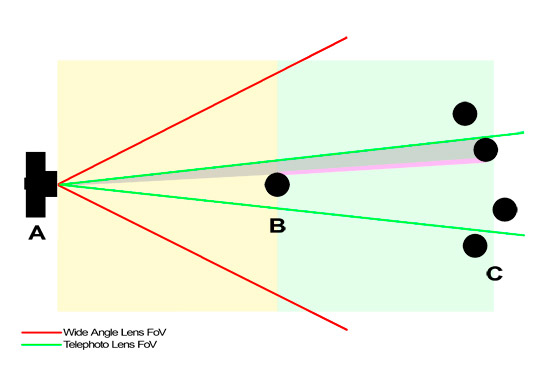
In this diagram, the camera ( A ) is focused on a single person ( B ), while a group of people ( C ) are in the background. The red lines indicate the Field Of View (FoV) of a wide angle lens, while the green lines indicate the FoV of a longer telephoto lens.
Accepting the principle that 'un-interfered with' light travels in straight lines, we can see that 'spatially' nothing has changed between the two lens focal lengths. The long lens with it's narrower FoV, simply sees a smaller section of the scene…. Person B is still the same distance from the camera, as are persons C. Plus, regardless of focal length used, the camera still sees the same relationship between person B and the partially covered person in C (as represented by the grey & magenta areas).
So there has been no "compression" of the image with the longer lens as often claimed. We are simply looking at a smaller section of the very same scene.
To demonstrate this, lets look at the following images that were taken from the same location, using different focal lengths.
Wide Angle Lens: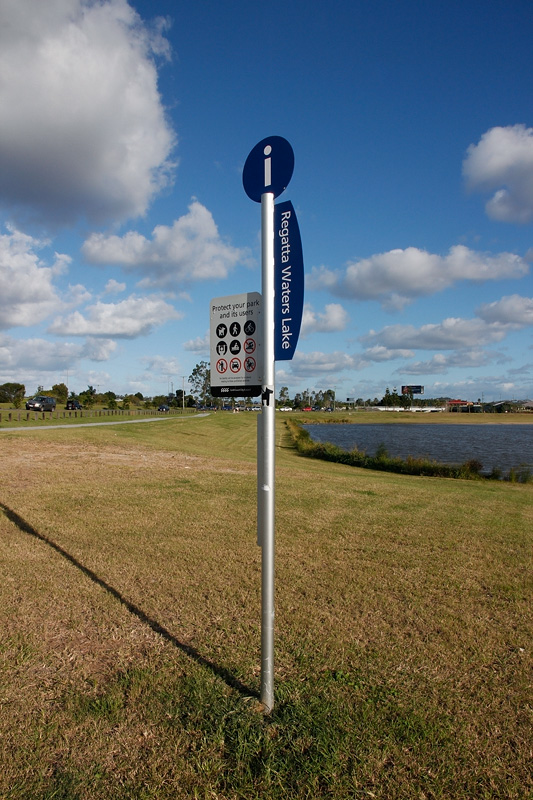
Telephoto Lens: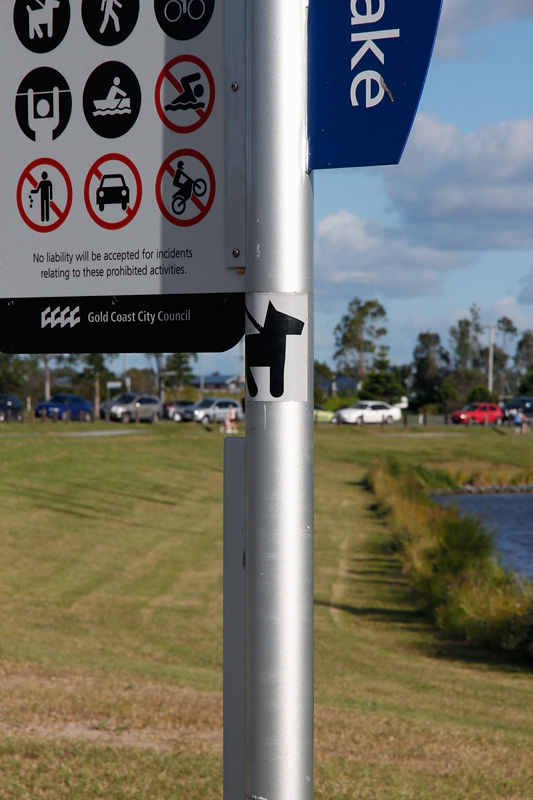
Now many people will claim that the wide angle image above demonstrates a different and much stronger perspective. However this is not the case as perspective in both images is identical.
In the following image, I have overlaid the telephoto view (lightened section) over the wide angle view and you can see that the images match perfectly.
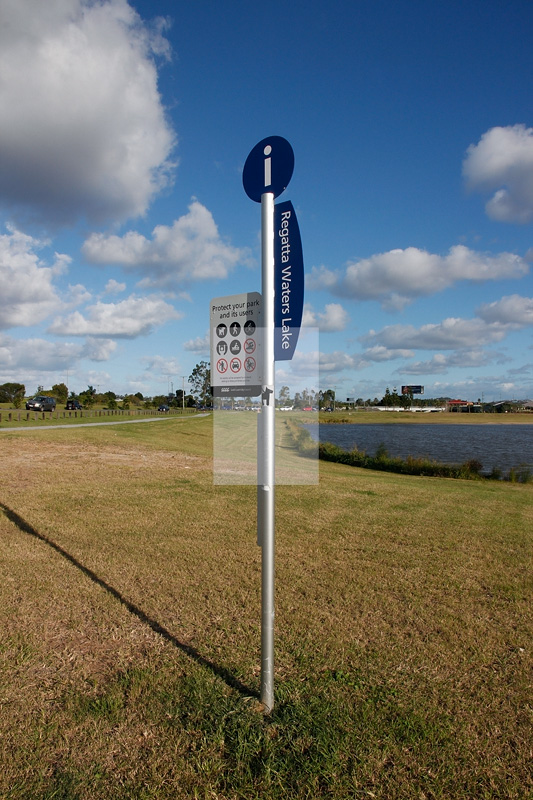
To help see how well the images match, this is the very same image enlarged and cropped:
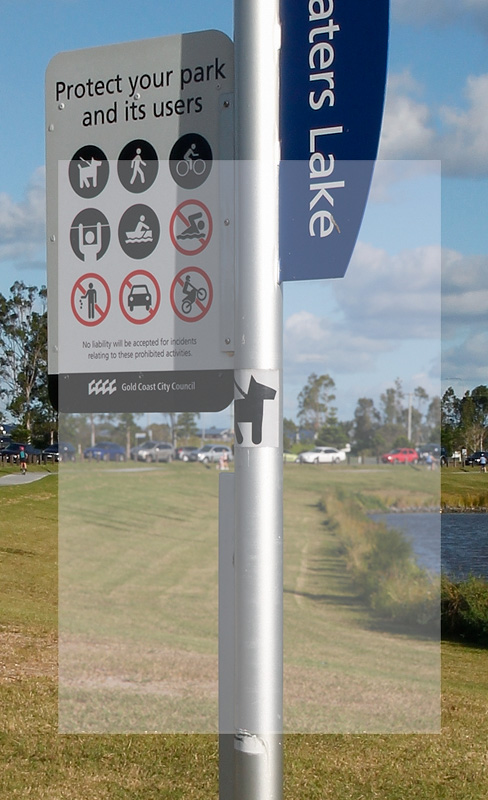
To truly change perspective and therefore the spatial relationship between ourselves and the objects around us, we must change our position. In this diagram the camera ( A ) has been moved closer to the single subject ( B).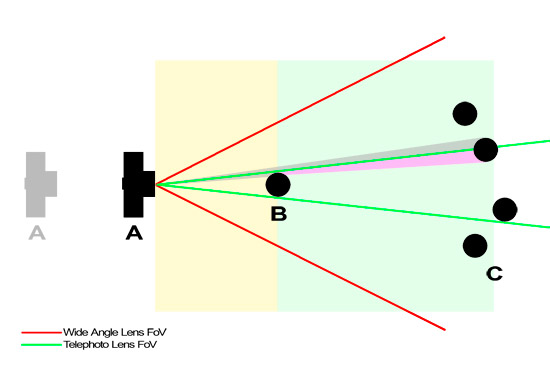
Here you can see that the FoV for each focal length has not changed, but the viewer's relationship between ( B ) and ( C ) has changed (as represented by the grey & magenta areas) when compared to the original graphic. So by changing position, we have changed the spatial relationship or perceived "perspective".
OK, so if the perspective did not change in the above images, why do I still think that the wide angle view shows more perspective?
Well we must remember that perspective is an illusion. It is created by the "seemingly" diminishing size of objects as they get further away and our brain interprets this diminishing size as distance and depth.
So by seeing more of a scene, we are seeing more of the closer objects around us and therefore seeing more of the diminishing size relationship between these objects and those further away. This increases our spatial awareness and creates a much stronger "feeling" of perspective.
Conversely, by narrowing our FoV with a telephoto lens and seeing less of a scene (and less of the closer objects), we reduce the amount of diminishing size relationships and thereby reduce our spatial awareness and our "feeling" of perspective.
Now I understand that the use of the term "perspective" can be seen as a bit "You say tomAto, I say tomARto"... but as a photographer, its important to understand the inter-relationship between field of view, focal length, sensor size, perspective, vanishing points etc, in order for us create the image that we aim to achieve.
Probably not so much when just capturing a happy-snap on the fly, but very much so when tasked with bringing a designer's concept or your own pre-conceived image idea to conclusion.
Cheers Russell.
See more Landscape Photography Tips




Comments & Feedback